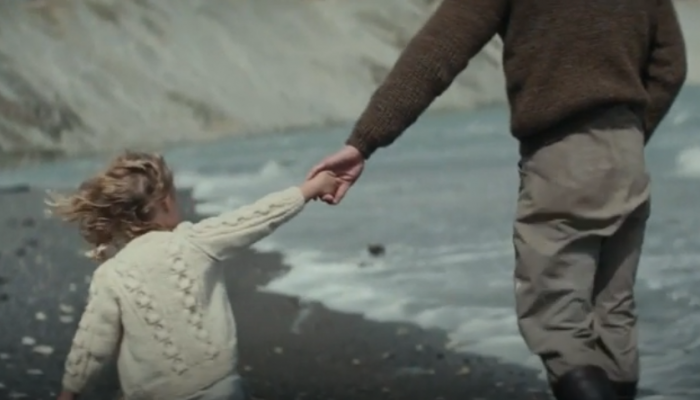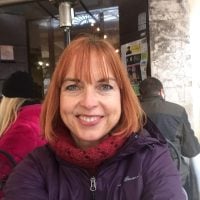*Editor’s Note: This piece is part of a series—lucky you. Head to the author’s profile to continue reading.
~
I was sitting in Peet’s Coffee, rain furiously pelting the windows just after the Thanksgiving holiday, when I saw the message in my inbox.
It was from Ancestry.com, announcing my DNA results were in.
With a strong will, and even stronger coffee in hand, I’d just plunged into phase one of my new project, dubbed Project Marci Resurrection. It was a plan to get my life on track, to get clear on my next steps to create Right Livelihood.
I’d promised myself no distractions—but this temptation was too great.
Getting my DNA analysis had seemed the next logical step in my quest to find information about my birth parents. I’d been anxiously awaiting the results since I sent in the little vial of spittle several weeks prior. As I’d put the package in the mailbox, it struck me as odd that a small sample of bodily fluid could potentially hold the keys to unveiling my past.
Ignoring the dictate to focus on the project at hand, my right finger found its way to the beckoning “Explore your DNA results” link, and I clicked. With my heart beating a little faster, I wondered if it would confirm the information my parents were given by the social worker when my twin sister and I were adopted at 11 months. We were told we were of Serbo-Croation, Norwegian, and Scottish heritage, with a pinch of other Northern European spice thrown in.
But the ethnicity breakdown was not entirely what I’d expected. No Balkan heritage was listed. It read: 42 percent England, Wales, and Northern Europe, 14 percent Germanic Europe, 13 percent Ireland and Scotland; 26 percent Scandinavia, 3 percent Baltics; and 2 percent Eastern Europe and Russia.
I noticed I felt some disappointment.
Where was that Balkan heritage that I had sort of come to identify with? I remember feeling proud on a few occasions in junior high when I announced my exotic heritage and almost nobody had ever heard of “Serbo-Croation.” One classmate in high school had even affectionately called me her “green-eyed Serb friend.” (I didn’t correct her and tell her my eyes were blue. In my mind, she’d just enhanced my exoticism.)
As I looked at my breakdown, and felt the disappointment, I became curious. Was my disappointment coming from that part of me that has always identified with the “underdog”? A part that hadn’t wanted to be so “Aryan,” shall we say? Did it make me feel less unique?
I hadn’t realized, until feeling the disappointment, that I’d built some kind of attachment to this one shred of “identity.” In the absence of any knowledge about my past, a part of me had eagerly clutched at some identification marker.
As I mentioned in the first piece I wrote about this question of whether to search for my biological mother or father, my time living in Macedonia and traveling in the Balkans had felt so…well, meaningful in some way. I’d imagined being connected somehow. When I’d seen so much resemblance with the Croatian women I saw in Zagreb, was that merely apophenia at work? In other words, just my attempt to find meaning or a pattern where none existed?
The disappointment I felt made me realize how often we make up stories or run narratives in our mind of who we are or where we belong, even without realizing it. Though I didn’t have a full-fledged narrative in my mind, I’d had a piece: I’d grasped at some piece of the jigsaw rather than feel afloat in the heap of unknown puzzle pieces. Identifying with this exotic “green-eyed Serbian” adoptee identity was my attempt at finding the corner pieces of the 1000-piece jigsaw puzzle. While I didn’t have access to the whole picture, I could at least grasp for some frame.
Not yet ready to give up my partial narrative, I searched among my emails from my sister. She had done her DNA test through My Heritage and had sent me the summary. I looked at her breakdown again and felt reassured; I could still hold on to my corner piece! Her breakdown included Balkan: 25.1 percent.
How could there be this discrepancy among twins? The rest of the breakdown was similar: Scandinavian: 41.1 percent; Scottish and Welsh: 20.7 percent; Finnish: 8.4 percent; and Eastern European: 3.3 percent.
But the seeds of doubt were planted: how reliable is any of this ancestry data?
I went back to the Ancestry site, which I was navigating for the first time. As I scanned the tabs to see how to access DNA matches, I noticed that the mailbox was flagged. I clicked on mail. To my surprise, it was a personal message posted early that morning from a man. It read:
“Hello Marci, I hope you’re comfortable with contacting me. When I registered with Ancestry, I thought perhaps this looming question mark in my life might be answered, though, it goes well beyond curiosity. If you’re willing to create a bridge between us, I am too. Let me know. Very best, J.D.”
My heart skipped a beat. Who was this person? I didn’t know what connection this person had to me. All I know is that I dashed out a reply before I remembered to breathe. I explained that my singular purpose in going onto Ancestry.com was to find out more information about my roots. I explained that my twin sister and I were adopted at 11 months, but have almost no information on birth parents, and the time has arrived in my life when I would really like to have more information.
Only after posting the reply did my eyes take in the information on the side bar:
DNA RELATIONSHIP
Parent / Child
Shared DNA: 3,445.536 cMs across 60 segments
I gasped. Could it be possible?
Was this man my father? Could my past possibly present itself this fast?
I’d been prepared for a long, drawn out process, maybe one that would involve years of waiting. I’d already spent hours trying to get correct information on how to access my original birth certificate, which would reveal the name of my biological mother.
I’d listened to dozens of frustrating phone menus, attempting in vain to find a live voice on the other end who could clarify the correct protocol: which superior court I needed to petition to open up the sealed birth certificate. Did I start with the court, or Los Angeles County Social Services, which carried out the adoption procedures? I had tracked down the Ombudsperson from the Office of the Foster Care, bounced among many different county clerks’ offices, and looked at dozens of websites addressing adoptee rights.
After all this red tape and hamster wheeling, the last thing I expected was to have a biological father fall into my lap—or at least into my Ancestry.com mailbox. After all, it was only recently that my mind had even begun to contemplate the existence of a father out there somewhere. My thoughts had always been directed toward my biological mother. Only thanks to a tarot reading back in September did my biological father come alive for me—come alive in the sense of suddenly not seeming so peripheral to my existence. Curiosity and a desire to connect had finally nudged their way in. Especially after Leonora, the tarot reader, had strongly suggested that pursuing my roots would dissolve this knot or blockage that was manifesting in my life.
With some adrenaline still moving in my system, I turned my attention back to Project Marci Resurrection. But I wondered if a different sort of resurrection was on the horizon. A resurrection of a sealed past.
I managed a few hours of work, until I was alerted to a new message in my Ancestry inbox. There went my heart again! I couldn’t open it fast enough.
It was J.D.’s reply:
“Dear Marci, Thank you for reaching out. It’s with some trepidation that prompts our exchange. I can provide information that’s been missing in your life for the last fifty years. And I’m pleased that you’ve opened that door. This new awakening is at once scary and exciting, as I expect it is for you. Thank you for courage.
We have much to learn about one another and you can count on my candor, honesty, and, hopefully, the right degree of sensitivity in exploring a totally new realm. I look forward to a rich exchange between us. Gotta run for now. With warmest thoughts, James.”
I was so smitten with his eloquence, I had to pinch myself. I looked up from the computer, seeking a reality check in the mundane things around me: the woman ordering an eggnog latte at the counter, the homeless man at the corner table nursing his 20 oz. cup of coffee, while staring into space.
That’s when my mind intervened and yelled, “Too good to be true!” Is this guy for real? It had to be a scam. Was he going to fake a connection and then hit me up for money? Armed with a name and now an email address, I did a Google search.
Not much came up. Results proffered one “match”–someone living in one of those cold, northern states, age 70. It was one of those background check sites, which also announced: 4 emails listed and 2 aliases listed for James D.
I finally went home, unable to focus on Project Resurrection. That night, I must have checked my email and Ancestry at least 10 times before going to bed.
But that was 3 days ago. And I’ve since checked my messages at least 30 times. Why has he disappeared? What could be more important right now than the unveiling of this 50-year mystery of my past? Was that glimmer of water just a mirage?
I just read J.D’s message again. His closing, “gotta run now” dangles before me.
Please don’t, says my heart. Not now.
There’s a resurrection to attend.
~


 Share on bsky
Share on bsky





Read 31 comments and reply